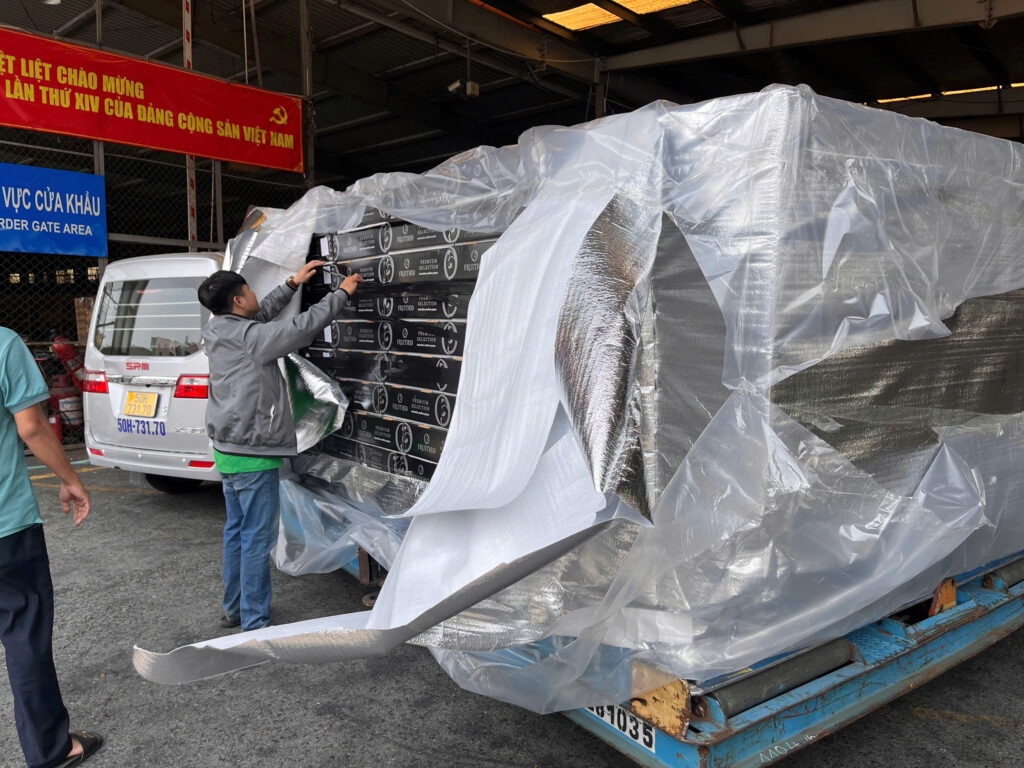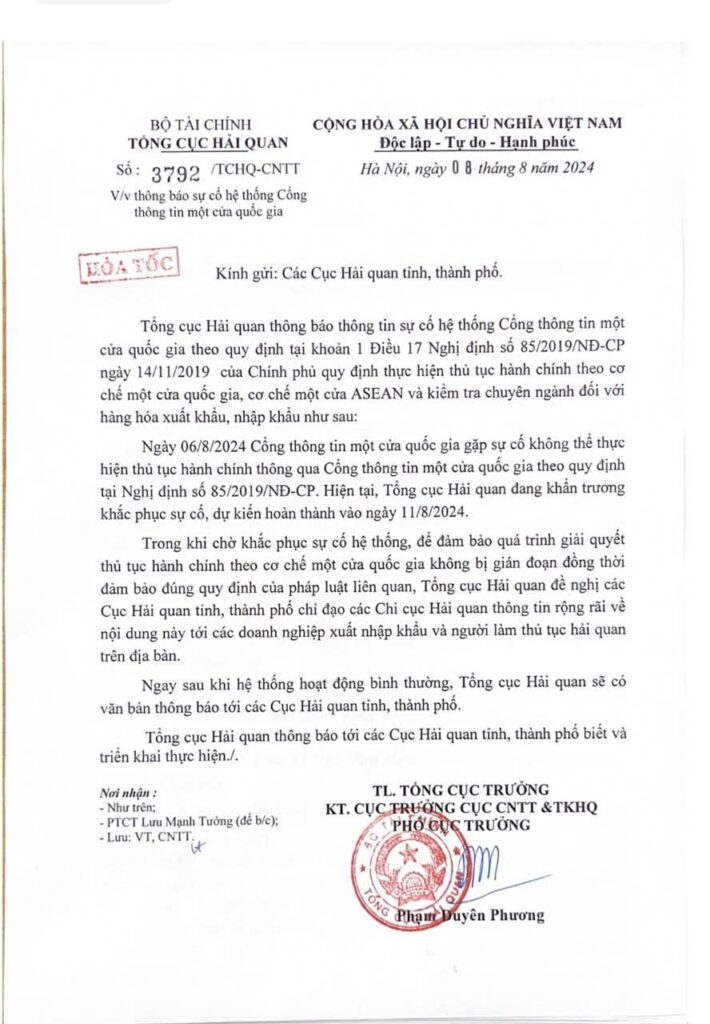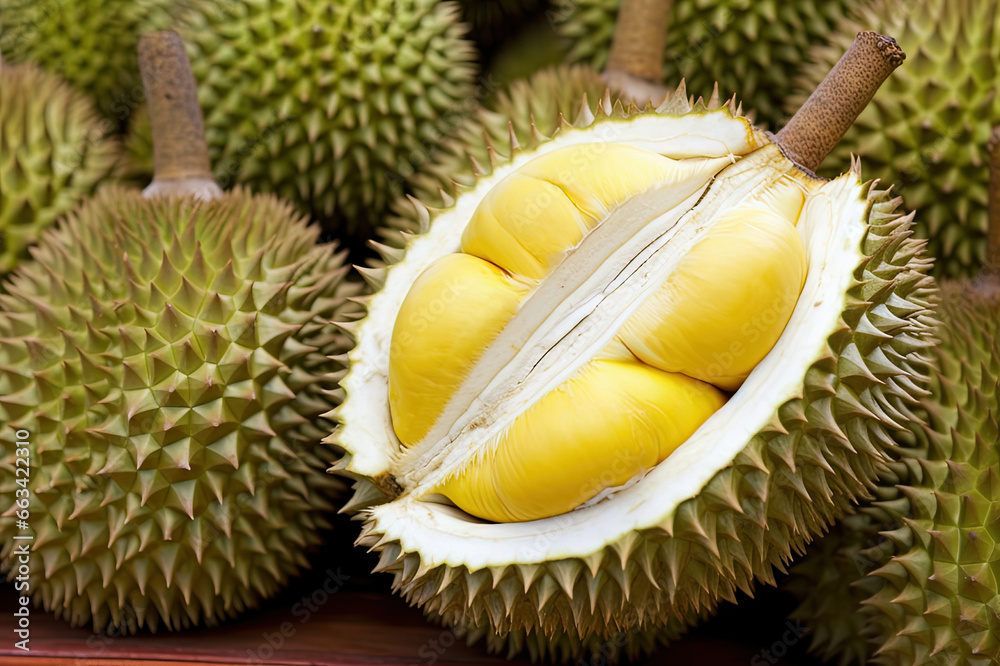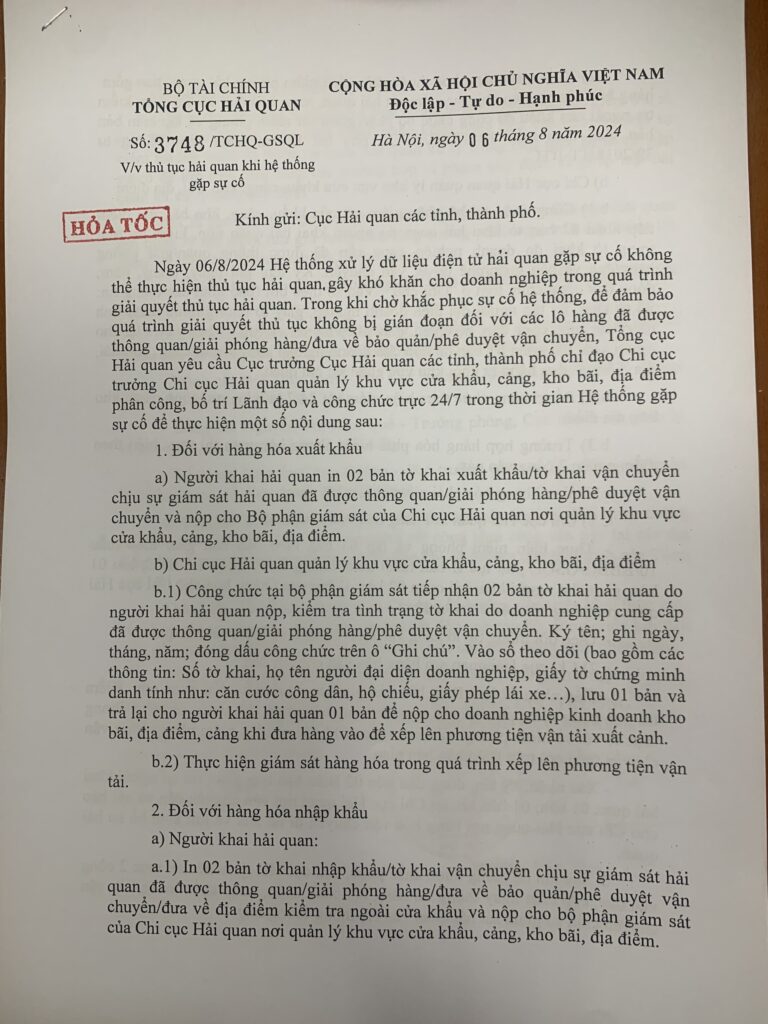Adjustments plus 2024
2.1. Only plus adjustment if the following conditions are met:
a) Paid by the buyer and not included in the actual value paid or to be paid;
b) Must be related to imported goods;
c) Have objective, quantifiable data consistent with relevant documents.
In case the imported shipment has additional adjustments but does not have objective, quantifiable data to determine the customs value, it cannot be determined according to the transaction value method and must move to the next method. .
2.2. Additional adjustments:
a) Sales commissions and brokerage fees. In case these costs include taxes payable in Vietnam, those taxes do not have to be added to the customs value of the goods. import.
b) Packaging costs associated with imported goods, including: Packaging purchase price, other costs related to the purchase, sale and transportation of packaging to the place of packaging and preservation of goods.
Containers, containers, and racks used as a means of packaging for transporting goods and used multiple times are not considered packaging attached to the goods, so they are not an amount that must be added. Packaging costs associated with the goods.
c) Cost of packaging goods, including:
c.1) Cost of packaging materials includes the purchase price of packaging materials and other costs related to the purchase and transportation of packaging materials to the packaging location;
c.2) Packaging labor costs, including labor hire and costs related to hiring labor to pack the goods being valued by customs.
In case the buyer has to bear accommodation and travel costs for workers during the packaging period, these costs also belong to packaging labor costs.
d) Subsidy: Value of goods and services provided by the buyer for free or at a discount, transferred directly or indirectly to the producer or seller, to produce and sell exported goods to Vietnam.
d.1) Support amounts include:
d.1.1) Raw materials, components, spare parts and similar products included in imported goods;
d.1.2) Raw materials, materials, and fuel consumed in the production of imported goods;
d.1.3) Tools, instruments, dies, molds, molds and similar products used to produce imported goods;
d.1.4) Design drawings, technical drawings, artistic designs, implementation plans, construction designs, sample designs, diagrams, sketches and similar products and services made in foreign countries and necessary for the production of imported goods.
d.2) Determine the value of the assistance:
d.2.1) If goods or assistance services are purchased from a person who has no special relationship to provide to the seller, the value of the assistance is the purchase price of those goods or assistance services;
d.2.2) If goods or assistance services are produced by the importer or a person who has a special relationship with the importer to provide to the seller, the value of the assistance is the cost of production of the goods. , that support service;
d.2.3) If the goods or supporting services are made by the buyer's production facility located abroad but there are no documents or vouchers to separately account for those goods or supporting services, the value The price of the assistance is determined by allocating the total production costs in the same period of that facility to the amount of goods and assistance services produced;
d.2.4) If the assistance is rented by the buyer, the value of the assistance is the rental cost;
d.2.5) If the subsidy is used goods, the value of the subsidy is the remaining value of that goods;
d.2.6) For supporting goods that are processed by the buyer before being transferred to the seller for use in the production of imported goods, the added value due to processing or processing must be added to the value. of the grant;
d.2.7) The amount of assistance provided by the buyer or seller at a discount to the exporter must be added to the reduced value in the customs value;
d.2.8) In case after producing the imported goods, surplus raw materials and scrap from the supporting goods are still collected, the value recovered from these surplus raw materials and scrap is deducted. out of the value of the aid, if there is data showing the value of scrap or excess raw materials.
The value of the assistance is determined to include costs related to the purchase, transportation, and insurance to the place of production of imported goods.
d.3) Allocation of subsidy value for imported goods.
d.3.1) Principles for allocating aid value:
d.3.1.1) The value of the assistance must be fully allocated to imported goods;
d.3.1.2) The allocation must be made into legal documents;
d.3.1.3) Allocation must comply with Vietnam's regulations and accounting standards.
d.3.2) Method for allocating the value of the aid:
Customs declarants themselves allocate allowances for imported goods according to one of the following methods:
d.3.2.1) Allocation to the number of imported goods in the first import shipment;
d.3.2.2) Allocation based on the number of units of goods produced up to the time of import of the first shipment;
d.3.2.3) Allocation to all products expected to be produced according to the purchase agreement between the buyer and seller (or producer);
d.3.2.4) Allocation according to the principle of decreasing or increasing;
d.3.2.5) In addition to the above methods, buyers can use other allocation methods (for example: allocation by month, quarter, year), provided that they comply with the provisions of law. accounting regulations and must be documented.
d) Copyright and license fees according to regulations.
e) The amounts that the importer must pay from the proceeds after reselling, disposing, and using the imported goods are transferred directly or indirectly to the seller in any form. Procedures for declaration and inspection are as follows:
e.1) In case this amount is determined at the time of registering the declaration:
e.1.1) The customs declarant declares himself in the corresponding criteria on the import goods declaration or customs value declaration in cases where a customs value declaration must be declared;
e.1.2) The customs authority checks and processes the inspection results according to the provisions of Article 25 of Circular 38/2015/TT-BTC regulating customs procedures; customs inspection and supervision; export tax, import tax and tax administration for exported and imported goods (amended and supplemented in Clause 14, Article 1 of Circular No. 39/2018/TT-BTC).
e.2) In case this amount cannot be determined at the time of declaration registration because it depends on post-import sales revenue or other reasons specifically stipulated in the goods purchase contract or document. Private agreement:
e.2.1) At the time of declaration registration, the customs declarant clearly declares the reason for not being able to declare the amount of money the importer must pay from the proceeds after reselling, disposing, and using the goods. imported on the import goods declaration or customs value declaration in cases where a customs value declaration is required. Within 05 days from the date of actual payment, the customs declarant shall declare and calculate the tax payable for the actual amount paid on the additional declaration after customs clearance, and at the same time pay the full tax according to regulations. determination;
e.2.2) The customs authority checks documents related to this amount of money and the customs declarant's declaration according to the regulations stated in point e.2.1 of this clause and handles as follows:
e.2.2.1) In case the customs declarant fails to declare or incorrectly declares the actual amount payable, issue a penalty decision according to regulations, and at the same time request the customs declarant to declare or make additional declaration. fig. In case the customs declarant does not declare or does not make additional declaration as requested, the customs authority shall determine the customs value, assess tax, and collect the full amount of tax and late payment interest (if any) according to the law. regulations;
e.2.2.2) In case the customs declarant fails to declare on time as prescribed in point e.2.1 of this clause, the customs authority shall impose penalties according to regulations.
g) Transportation costs and costs related to transporting imported goods to the first border gate of import, excluding costs of loading, unloading, and loading goods from the means of transport to the first border gate of import.
In cases where the costs of loading, unloading, and loading goods from the means of transport to the first border gate of import are included in the international transport costs or are included in the actual price paid or to be paid, the deducted from the customs value of imported goods if the conditions specified in Clause 1, Article 15 of Circular 39/2015/TT-BTC are met.
g.1) The value of this adjustment is determined on the basis of the transport contract and documents related to the transport of goods;
g.2) In case the purchase price does not include transportation costs but the buyer does not have a transportation contract, documents related to the transportation of goods, or has one but is not legal, this shall not be applied. transaction value method;
g.3) In case the shipment contains many different types of goods but the transport contract or documents related to transport of goods do not specify details for each type of goods, the customs declarant chooses one of the following allocation methods:
g.3.1) Allocation based on the transport tariff of the freight carrier;
g.3.2) Allocation based on weight or volume of goods;
g.3.3) Allocation according to the ratio of the purchase value of each type of goods to the total value of the shipment.
h) Insurance costs for imported goods to the first import border gate.
h.1) In case the importer does not purchase insurance for the goods, this cost does not have to be added to the customs value;
h.2) Insurance premiums purchased for the entire shipment consisting of many different types of goods, but not yet detailed for each type of goods, are allocated according to the value of each type of goods.
i) The costs mentioned in Points g and h of this Clause do not include value added tax payable in Vietnam. In cases where this tax is included in transportation costs, international insurance fees or is included in the price actually paid or to be paid, it will be deducted from the customs value of imported goods if fully meet the conditions specified in Clause 1, Article 15 of Circular 39/2015/TT-BTC.





